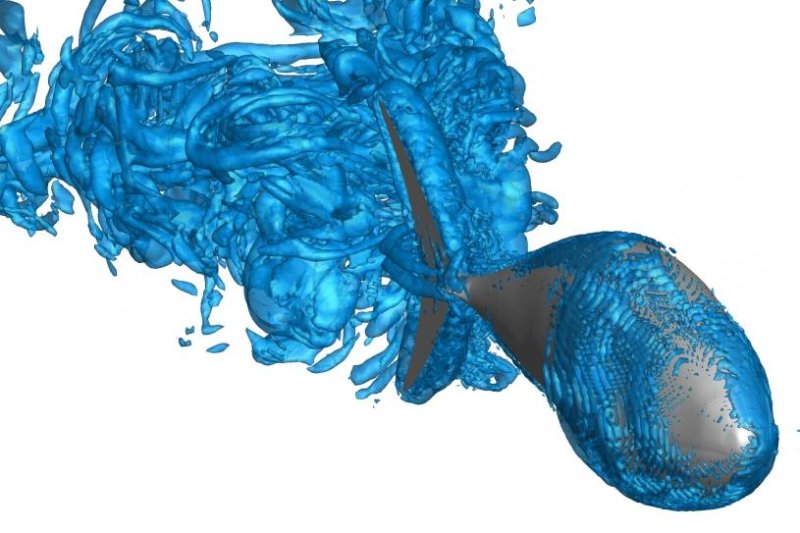High-speed, laser-based cameras helped scientists measure the movements of fluid shed with each twitch of the Tunabot's tail. Photo by UVA
Sept. 19 (UPI) -- Engineers have developed an underwater robot capable of matching the movements and speed of yellowfin tuna.
To build the robot, the team of engineers closely studied the physics of fish propulsion. Researchers hope their efforts will eventually inspire a new generation of underwater vehicles, powered by fins and fish-like locomotion instead of propellers.
"Our goal wasn't just to build a robot. We really wanted to understand the science of biological swimming," Hilary Bart-Smith, an engineering professor at the University of Virginia, said in a news release. "Our aim was to build something that we could test hypotheses on in terms of what makes biological swimmers so fast and efficient."
Before researchers could set out to build their robot, the scientists needed to understand how fish move. The team precisely measured the swimming movements of yellowfin tuna and mackerel.
Bart-Smith and her research partners designed a fish-like robot capable of beating its tail fast enough to match the speeds of yellowfin tuna. They named their creation "Tunabot."
After putting Tunabot through a series of tests, scientists compared its swimming performance to the performance of real tuna. The data -- detailed this week in the journal Science Robotics -- showed Tunabot can replicate a yellowfin's top speed.
For the tests, the robot swam in place, held steady by a fishing line. Scientists produced stronger and stronger currents in the test tank to test Tunabot's top speeds. As they increased the current, the robot's tail and whole body perform a fast-paced bending pattern. Researchers used a laser to measure the fluid motion shed by each bend of the robot's body and tail.
"We see in the fish robotics literature so far that there are really great systems others have made, but the data is often inconsistent in terms of measurement selection and presentation," said doctoral student Carl White. "It's just the current state of the robotics field at the moment. Our paper about the Tunabot is significant because our comprehensive performance data sets the bar very high."
Though Tunabot is inspired by yellowfin tuna, researchers aim to eventually build a robot fish that can outrace their biological forefathers.
"Our ultimate goal is to surpass biology," said Bart-Smith. "How can we build something that looks like biology but swims faster than anything you see out there in the ocean?"















